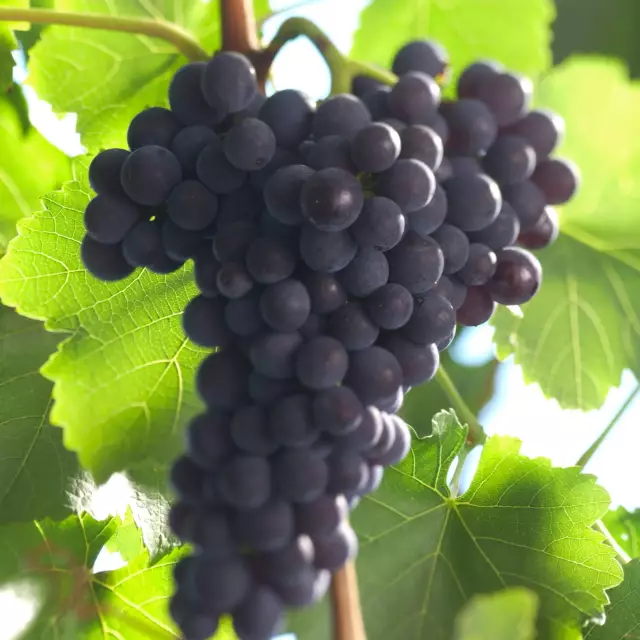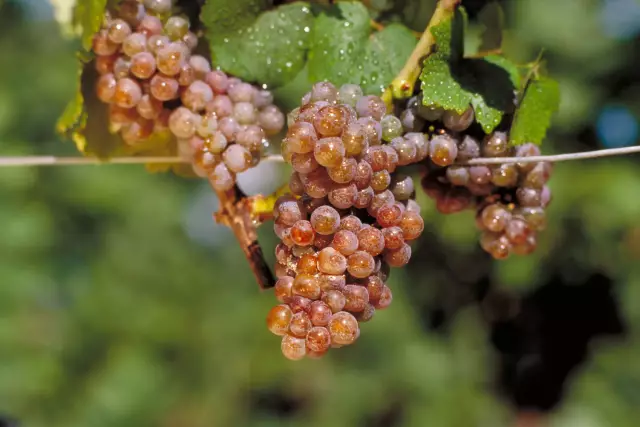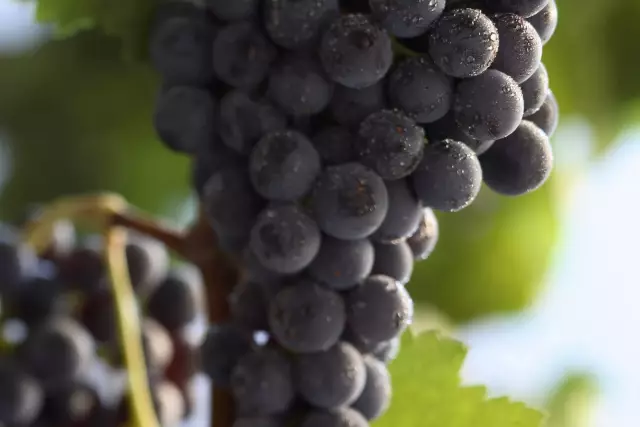Spätburgunder / Pinot Noir

In Germany, the Spätburgunder (Pinot Noir) is to red wine what the Riesling is to white wine: the cream of the crop.
Facts
-
11.519 ha
Vineyard area 2023
-
11 Prozent
Planted vineyard area in Germany
-
64 Prozent
Pinot Noir vineyards in the Ahr wine region
Cultivation and significance
Demanding in terms of soil, climate and weather conditions, Pinot Noir is the number one red grape variety in Germany.
In Germany, around 11,519 hectares (2023) of vineyards are planted with the Pinot Noir variety, which corresponds to around 11 per cent of the total vineyard area. Winegrowers and consumers are increasingly favouring the variety. Since the beginning of the 1990s, the area planted with Pinot Noir has grown by more than 5,000 hectares. Most of the vines of this variety are in Baden (5,029 hectares) - with a focus on the Kaiserstuhl. The Palatinate (1,739 ha), Rheinhessen (1,504 ha), Württemberg (1,302 ha), the Rheingau (403 ha) and the Ahr (342 ha) are also important areas for growing Pinot Noir.
Vinification and flavour
Pinot Noir wines taste full-bodied and velvety, with a fruity flavour and hints of almond. The typical Pinot Noir has a slightly sweetish aroma of red fruit, from strawberry to cherry and blackberry to blackcurrant. Barrique wines also have hints of vanilla and cinnamon. A distinction is made between the classic and the modern type. Traditionally, the best Pinot Noirs were made from very ripe grapes, were not very colourful, mild, low in tannins and reddish-red in colour. In addition to this classic type, the modern Pinot Noir with a strong red colour, more tannin, less acidity and often a short ageing period in small oak barrels is becoming increasingly important.
Pinot Noir red wines are ideal for the cooler months of the year. They are drunk chilled to 16 to 18 degrees. Full-bodied varieties are best served with roasts, game or a cheese platter. Weißherbst goes well with starters and white meat, and in Auslese quality also as an aperitif.
History
The Pinot Noir grape variety belongs to the Burgundy family. It is probably one of the earliest varieties to be selected from the wild vines in western Central Europe. Charles the Fat brought the variety to Lake Constance in 884. It was planted in the Rheingau in the 13th century. In the 16th century, it was probably also planted in the Palatinate. In the 18th century, the variety is said to have travelled from Burgundy to the Ahr. The variety experienced a boom 150 years ago with the expansion of sparkling wine production, for which pure Burgundy vineyards were planted. The terms "Pinot Noir" and, in parts of Baden, "Klevner" are used as synonyms.
At a glance
- Most important red wine variety in Germany
- High demands on location and climate
- Aroma: blackberries, cherries, strawberries, elderberries, pepper
- Flavour: classic vinification: mild, low in tannins
- modern vinification: full-bodied and rich in tannins
What is the traditional style of German Pinot Noir?
The traditional style of German Pinot Noir (Spätburgunder) is lighter in colour, body and tannic acidity than its counterparts from warmer climates.
Tips from the Asian kitchen CHINA : Dumplings
German wines have a natural advantage when it comes to harmonising perfectly with selected Asian dishes. With a lighter alcohol content, sometimes crisp acidity, moderate residual sweetness or soft tannins in red grape varieties, they go perfectly with a variety of styles of Asian cuisine.
- 500g Flour
- 240ml Warm water
- 400g Minced pork
- 100g Celery
- 1 TL Salt
- 1/2 TL Sugar
- 3 EL Light soy sauce
- 1 EL Oyster sauce
- 2 EL Oil
- 100 ml Water
PREPARATION
Knödelteig
Pour flour into a large bowl, add 240 ml of warm water and stir until well combined.
Dip your hands in some dry flour and knead the dough until it becomes smooth.
Place the dough in a bowl, cover with plastic wrap and set aside for 1 hour.
Kneading
Mix the minced pork, salt, sugar, light soy sauce, oyster sauce, oil and 100 ml water well and leave to rest in the fridge for 2 hours.
<p
<p>Chop the celeriac and pat dry with a kitchen towel.
Take the pork out of the fridge and stir in the chopped celery.
Knödel
Divide the dough into small pieces of approx. 8g.
Roll out the dough pieces with a rolling pin to a diameter of approx. 7 cm.
Take approx. 15g of the filling and place it in the centre of the rolled out pastry. Fold the dough together and press the edges in lightly with your fingers.
<p
<p>Cook the dumplings
Fill a large pan with water and bring to the boil. Add an appropriate amount of dumplings and cook until they rise to the surface.
<p
<p>Remove the knots and serve.
- Pinot Blanc (trocken)
- Pinot Blanc (halbtrocken & feinherb)
- Silvaner (trocken)
- Silvaner (halbtrocken & feinherb)
- Spätburgunder / Pinot Noir (trocken)
- Spätburgunder / Pinot Noir (halbtrocken & feinherb)





